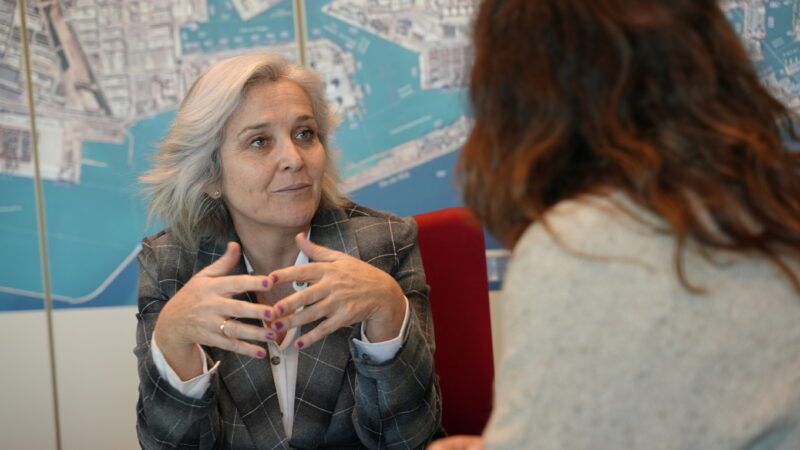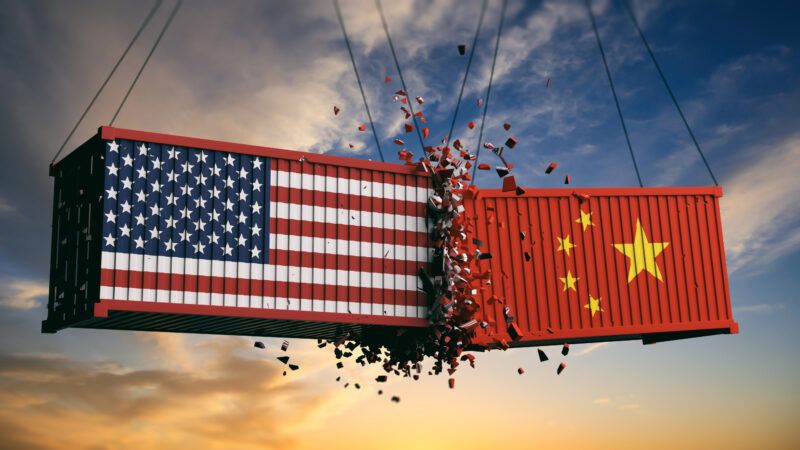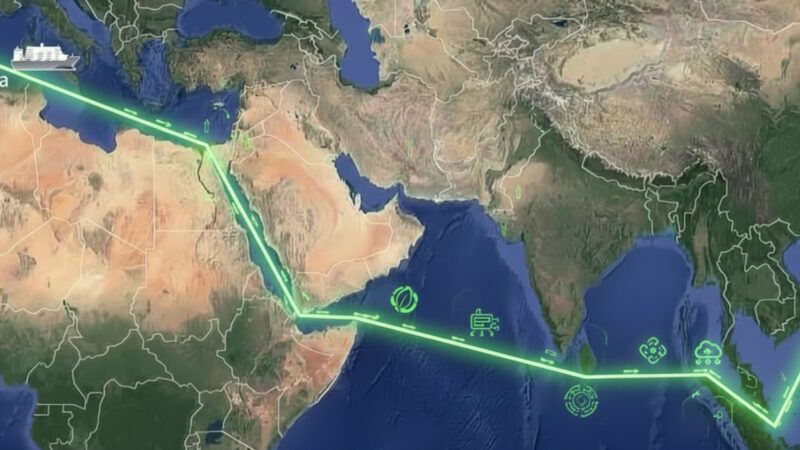 OPS technology will reduce by 38% the tonnes of NOx and CO2 emitted by ships during berthing (Getty Images/PierNext).
OPS technology will reduce by 38% the tonnes of NOx and CO2 emitted by ships during berthing (Getty Images/PierNext).
Ports connect ships to the electricity grid to avoid pollution
By 2030, EU ports must have the infrastructure to enable ships docking at their quays to connect to the electricity grid. The Port of Barcelona is moving steadily towards this goal, ahead of European regulations. Ana Arévalo, Director of Energy Transition and responsible for implementing the Nexigen project, explains the milestones achieved to date and the remaining challenges.
 OPS technology will reduce by 38% the tonnes of NOx and CO2 emitted by ships during berthing (Getty Images/PierNext).
OPS technology will reduce by 38% the tonnes of NOx and CO2 emitted by ships during berthing (Getty Images/PierNext).
The aim of the 'Nexigen, Quality for the Air, Quality for the Port' project is, as its name suggests, to improve the air quality of the port and the city of Barcelona. How? By implementing OPS (Onshore Power Supply) technology to establish an electrical connection between the quay and the ships docked in port. This will allow them to switch off the auxiliary engine when at berth.
The energy required for this electrification must be 100% renewable. Therefore, this operation will reduce by 38% the tonnes of NOx and CO2 emitted by ships during berthing.
To achieve this, docks must be electrified. A complex process that, among other infrastructures, will require the supply of energy from an electrical substation by means of a 220 kV high voltage line, the installation of 240 kilometres of underground cables and the construction of 20.5 kilometres of pipes from the substation to the docks.
The electrification of the docks (also known as OPS or cold ironing) of the Port of Barcelona is essential to achieve a more ambitious goal: to be a climate-neutral port by 2050.
When does the Nexigen project kickstart?
The project began in February 2020, when the Board of Directors wanted to accelerate the electrification of the docks as a key element in speeding up the process of decarbonising the Port of Barcelona. We began to plan, picked up and updated all the existing studies we had to date and began to design a roadmap.
In these three years, that commitment has become a directive from the European Union that obliges us to have OPS at the container, ferry and cruise ship docks by 2030. In this sense, the Port of Barcelona has moved ahead of the legislation that has followed.
The first year, despite the pandemic, was very good for the project start because it allowed us to approach all the entities, companies and people who could provide us with information and share their experience with us. It is an ambitious project that includes many areas and it is necessary to know them in order to be successful.
How do you plan a project of this scale?
Our roadmap covers nine different areas. Each one is perfectly delineated with all the actions we need to do, year by year, to achieve the final goal.
First of all, we had to know ships’ consumption when they are docked in port, something we determined theoretically because there is not much reliable data on real emissions from ships in port.
Then we designed the first real roadmap of the project: where we wanted to go and what we had to do. In the end, the basic question of this project is: what do you need for a ship to arrive at the quay and be able to connect to the grid, switch off its auxiliary engines and stop polluting?
¿And how do you make it happen?
When a ship arrives at the port it uses its auxiliary engines. If it plugs in the quay, drawing power from the grid, it can switch off the auxiliary engines and not pollute because it would consume 100% renewable energy through this connection.
Was this the first challenge?
The first thing we saw was that we need around 80-90 megawatts for the whole Port. We are a port in the middle of the city of Barcelona. Electricity consumption around us is high and there are not enough distributor capacity that can supply us with this power.
Once you have enough power, you have to reach the quay with underground cables. In other words, you have to cross the entire port. Then you have to build the OPS itself, which is a series of electrical switchgear that transforms the energy coming from land into the energy required by the ship.
There were three parts to resolve; the energy, the infrastructure of the cables to the quay and the OPS. We quickly realised that we had to execute everything in parallel because otherwise we would not make it in time to meet the 2030 target. At the beginning there were many uncertainties that we have been gradually solving and that we hope to finish resolving with two pilot projects that we have started.
"In 2024, we will start connecting the first ships at the container terminal and two or three months later, the ferries will be connected"
What do these pilots involve?
The first is being built at the BEST container terminal, one of the few places where we have sufficient power, nine megawatts, to allow us to connect up to two medium-sized container ships simultaneously, with moderate consumption, or to use the installation to connect a large container ship with higher consumption. For example, a 20,000 TEU ship. The second pilot, which will become a reality, will be implemented at the Barcelona Ferry Terminal (TFB).
For both we have drawn up specific tender specifications, focused on companies with indisputable technical solvency and which will also design the project, carry out the work and take charge of the subsequent maintenance, which ensures the reliability of the system.
We are very pleased that the pilot of the BEST Terminal has been assigned to PowerCon, one of the two most experienced OPS companies in the world. For the Ferry Terminal we are in the process of awarding the contract to the company Omexom of the Vinci Group, another of the most experienced companies worldwide in the implementation of OPS.
In 2024 we will start connecting the first ships at the container terminal and two or three months later, the ferries.
The aim of both pilots is to obtain real data, design and test procedures and use the experience of these pilots to achieve the best OPS design for the rest of the port.
Will the power needed for these connections be sourced from the planned substation?
In 2019, the Port requested a position within the Ministry of Energy's electricity planning. In this case, a position is requested within the Cerdà substation that is currently being built by REE (REDEIA), a 220 kV transmission substation. This substation can be used for various purposes, including a large consumer, which is the case of the Port of Barcelona.
In February 2023, we obtained access and connection to the Cerdà substation, allowing us to connect to SE REE and for this we have to build an electrical substation within the port area, which will provide power to the entire area. This is the SE PORT substation that will connect with the position at the Cerdà substation in high voltage.
The project for the construction of the SE PORT and the high voltage line connected to the Cerdà Substation position has recently been approved by the Port's Board of Directors and we are now awaiting approval from the Spanish Council of Ministers. Once approved, we will launch the tender to start the project and its subsequent construction. In parallel, we have to carry out a series of procedures with REE, which simultaneously builds the assigned position and we have to coordinate for the connection. This process will take us to 2026.
What do you hope to have completed by that date?
In parallel to the substation, a series of pipelines will have been built, including a very complex underwater drilling led by the infrastructure department that will cross from the power dock to the Adossat dock. By then we should have built the OPS infrastructure at the first cruise terminal, all the electrical switchgear that makes up the OPS and the Cable Management System. At that point we will be able to connect the first cruise ships. From there, the implementation at the Adossat dock should be much smoother, although it is technically very complex.
Do ships and ferries have the on board infrastructure to be able to connect?
The new vessels already incorporate this infrastructure, but it is true that the useful life of a ship is 20 or 30 years, so part of the fleet does not have it. In this sense, we started to talk to the different shipowners and the truth is that the response is very positive. For example, the Grimaldi Group, which is very committed to sustainability, decided to take a step forward and undertook to have its ships prepared when land installation is ready. Specifically, the vessel Ciudad de Palma de Trasmed GLE, which runs daily on the Barcelona - Palma de Mallorca route, will be the first one we use for the pilot.
We have also signed an agreement with all shipping companies and cruise terminals through which they commit to help us develop the project technically and to support us in the process of electrification of the cruise ship docks. This agreement includes the creation of a working group to agree on technical standards and deployment phases, aligning shore-side infrastructure with fleet availability.
The Port of Barcelona participates in several European projects to implement OPS in ports. Do you share experiences with other port authorities?
We form part of a specific group within the World Port Climate Action Program (WPCAP) where we meet with other ports every fortnight to discuss and exchange information on OPS. This has been a key support for the development of the project.
Another international collaboration is the Ealing project in which we have been developing different initiatives aimed at incorporating OPS in ports, from the state of the art, infrastructures and environmental studies.
We have also joined forces with the port of the Balearic Islands, with which we have daily connections. Cabotage traffic with the islands is extremely important. We have presented a joint financing project, OPS 4B&B, to the Spanish Recovery Funds and it has been awarded to us. It will help us to finance the pilots mentioned earlier.
On the other hand, the port of the Balearic Islands will electrify different docks on its islands so that ferries can be connected in both ports and thus create a green corridor.
Benchmarking with other ports has also been fundamental, visiting their facilities and listening to their explanations, based on their experience, on what is working and not. We are also in permanent contact with other Port Authorities and with Puertos del Estado for the development of these types of projects.
THIS IS HOW EMISSIONS WILL BE REDUCED AT THE PORT OF BARCELONA WITH THE IMPLEMENTATION OF OPS (ONSHORE POWER SUPPLY).
Forecast of the reduction in emissions that will result from the electrification of the docks, according to a model of the Port of Barcelona.
Tons of PM10 per ship at berth
Tons of PM 2.5 per ship at berth
Tons of Nox per ship at berth
What are the remaining challenges until 2030?
We have come a long way, but there is still a lot to do. Not only at a technical level, but also at a regulatory level, as legislation must accompany us on this path. It is necessary to analyse the need for specific pricing for OPS, which is a new type of consumption that behaves very differently, electricity-wise, from what we are used to. This analysis is essential for these projects to be successful. It makes no sense for us to invest millions in infrastructures if the business plan reveals that they are not feasible because of operating costs or other costs. On this side there is a lot of progress to be made, but we have examples from other countries that we could adopt.
Another fundamental point is how we are going to manage all this and with whom. This is one of the most important issues right now. This is what we are going to focus on this year.
Finally, the calendar. We have a deadline by which everything has to be ready. We are taking giant steps because we strongly believe in this project. It will not only improve the air quality in our port but also in the whole city. It is good for everybody.






